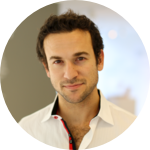About This Project
This is an example using a problem statement taken from the Problem Statement Repository. Anybody could apply using this problem statement (proposing their own solution, that is), but this is specifically used to model. This proposal is following the Garden Grants Guidelines document.
We recommend that all teams make a copy of this application template to help collect and refine the content needed to make this application.
Ask the Scientists
Join The DiscussionWhat is the context of this research?
Atmospheric CO2 removal (CDR) and point-source capture (PSC) of CO2 are well-accepted as being necessary for successfully decarbonizing within climate goals (1). Direct air capture (DAC) is a CDR pathway with ideal verifiability and durability. Both DAC and PSC are cost constrained, primarily by the CapEx of the gas contactor and the energy required to drive large swings in temperature or pH to regenerate CO2 from the capture material (2).
Those high cost and energy requirements are driven by a thermodynamic trade-off between the rate of CO2 absorption and the CO2 regeneration energy: CO2 capture materials with high absorption rate, which reduce cost by reducing the gas contactor size, typically have high CO2 regeneration energy, and vice versa (3).
What is the significance of this project?
Carbonic anhydrases (CAs) catalyze fast CO2 absorption in solvents with low CO2 regeneration energy, resolving the tradeoff described above (4). CA could reduce DAC and PSC cost by reducing parameter swing size or gas contactor size, if it were stable in DAC or PSC processes that may include high pH, temperature, or ionic strength. E.g., thermostable CA via protein engineering (PE) can already reduce PSC cost >30% (5,3).
AI-driven PE and screens of many natural variants are revolutionizing PE but haven’t been applied to CA. Ultrastable CAs produced using those tools likely could reduce DAC and PSC cost substantially. While modeling is needed to quantify application-specific benefits and target CA properties, PE for ultrastable CA can begin now and later be adapted to specific uses.
What are the goals of the project?
While modeling analyses are ultimately required to provide target properties for ultrastable CAs to be used in development of novel CA-enhanced DAC and PSC, initial efforts to use AI-based PE and screens of many variants should target many-fold CA stability improvements compared to the state-of-the-art while retaining high activity (kcat/kM ~108 M-1s-1). For a comprehensive discussion of state-of-the art CA engineering and performance, see (6) and (4).
Example stability benchmarks are:
temperature stability
pH stability
90% activity retention after 24 hrs at pH 11.0 (9)
Stability demonstrations should be performed in solvents relevant to DAC and PSC, such as 10-20% K2CO3.
Budget
Because this part is public, you do not have to be detailed here.
Please note that we do consider the amount requested during review; all else equal, projects that require less funding will be favored.
We will pay a maximum of 10% institutional overhead, in line with the Gates Foundation precedent, which should be accounted for in your budget.
 Project Timeline
Project Timeline
In this example project, we aim to complete the work within a year. As part of the granting agreement, there will be a 6-month and a 12-month report.
Apr 01, 2024
Submit a 6-month report of technical progress
Oct 17, 2024
Submit a 12-month report of solving climate change
Meet the Team
Team Bio
You can learn more about our team here: https://homeworld.bio/about/
Daniel Goodwin
My mission is to see synthetic biology reach its industrial potential of creating atomically precise, infinitely scalable tools that define the next era of physical technology.
I am the Founding co-Director of Homeworld Collective with my dear friend Paul Reginato. Homeworld exists to develop the field of climate biotech into a hyperproductive community.
I post essays and explore ideas in my personal blog Punk Rock Bio.
Additional Information
This proposal was taken from this entry in the Problem Statement Repository.
Project Backers
- 0Backers
- 0%Funded
- $0Total Donations
- $0Average Donation
